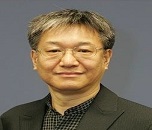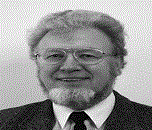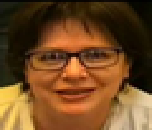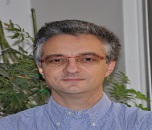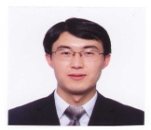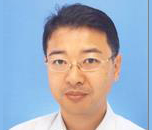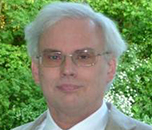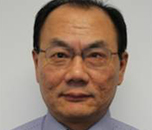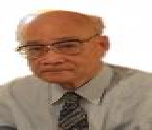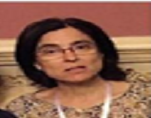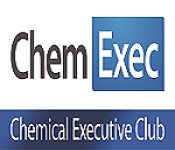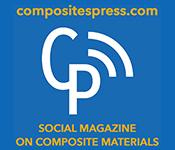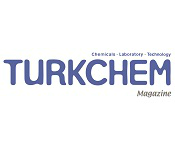Theme: Innovation towards the Arena of Ceramics and Composites Materials Research
Ceramics 2018
Conference Series takes great pleasure and feels esteemed in Welcoming the contributors over the globe to attend “4th International Conference and Expo on Ceramics and Composite Materials” (Ceramics 2018) during May 14-15, 2018 at Rome, Italy, which includes prompt Keynote presentations, Oral Talks, Poster presentations, and Exhibitions.
Conference is organized around the theme: “Innovation towards the Arena of Ceramics and Composites Materials Research”
The scientific event offers the best platform with its well organized scientific program to the audience which has interactive panel discussions, keynote lectures, comprehensive talks and poster sessions on the topics like Ceramics and Glasses, Advanced Ceramic Materials, Ceramics and Composites, Composite Materials, Ceramic Coatings, Advanced Materials and Technologies, Materials and Innovative Processing Ideas, Nanostructured Ceramics, Porous Ceramics, Sintering, Crystalline Materials, Ceramics Applications, Bioceramics and Medical Applications, Functional Ceramics and Inorganics, Ultra-High Temperature Ceramics, Ceramic Compounds: Ceramic Materials, Ceramics in Biology and Medicine, Ceramic Industry and Environment, Non-oxide Ceramics, Nuclear Ceramics.
ConferenceSeries organizes a conference series of 3000+ Global Events with over 600+ Conferences, 1200+ Symposiums and 1200+ Workshops in USA, Europe & Asia with support from 1000 more scientific societies and publishes 700+ Open access journals which contain over 30000 eminent personalities, reputed scientists as editorial board members.
Scope and Importance
Over the last thirty years composite materials, plastics, and ceramics are the dominant rising materials. The degree and variety of applications of composite materials have grown up steady, penetrating and subjugation new markets unrelentingly. fashionable composite materials represent a major proportion of the built materials market starting from everyday product to classy niche applications.
Why Ceramics 2018 ?
Ceramics 2018 offers an incredible chance to satisfy and create new contacts within the field of Materials Science and Engineering, by providing collaboration areas and break-out rooms with tea and lunch for delegates between sessions with valuable networking time for you. It permits delegates to possess problems addressed on Composite Materials by recognized global experts with the most recent developments in the Composite Materials field and supply info on new techniques and technologies. This International Composite Materials Conference can feature renowned keynote speakers, plenary speeches, young research forum, poster presentations, technical workshops and career guidance sessions.
Target Audience:
- Eminent Scientists of Ceramics and Composite Materials and Materials Science and Engineering
- Ceramics and Composite Materials, Advanced Materials and Technologies Research Professors and research fellows
- Students from Material Science, Ceramics and Composite Materials, Materials Technology
- Directors of Ceramics and Composite Manufacturing, Materials Manufacturing companies
- Materials Processing Engineers, Advanced Materials, and Technologies and Engineers
- Members of different Materials associations
Conference Series takes great pleasure and feels esteemed in Welcoming the contributors over the Globe to attend “4th International Conference and Expo on Ceramics and Composite Materials” (Ceramics 2018) during May 14-15, 2018 at Rome, Italy which includes prompt Keynote presentations, Oral Talks, Poster presentations, and Exhibitions.
The scientific event offers the best platform with its well organized scientific program to the audience which has interactive panel discussions, keynote lectures, comprehensive talks and poster sessions on the topics like Ceramics and Glasses, Advanced Ceramic Materials, Ceramics and Composites, Composite Materials, Ceramic Coatings, Advanced Materials and Technologies, Materials and Innovative Processing Ideas, Nanostructured Ceramics, Porous Ceramics, Sintering, Crystalline Materials, Ceramics Applications, Bio ceramics and Medical Applications, Functional Ceramics and Inorganics, Ultra-High Temperature Ceramics, Ceramic Compounds: Ceramic Materials, Ceramics in Biology and Medicine, Ceramic Industry and Environment, Non-oxide Ceramics, Nuclear Ceramics.
Conference Series organizes a Series of 3000+ Global Events with over 600+ Conferences, 1200+ Symposiums and 1200+ Workshops in USA, Europe & Asia with support from 1000 more Scientific Societies and publishes 700+ Open access journals which contain over 30000 eminent personalities, reputed scientists as editorial board members.
A ceramic is an inorganic, non-metallic, solid material comprising metal, non-metal or metalloid atoms primarily held in ionic and covalent bonds. This article gives an overview of ceramic materials from the point of view of materials science. The crystallinity of ceramic materials ranges from highly oriented to semi-crystalline, vitrified, and often completely amorphous (e.g., glasses). Most often, fired ceramics are either vitrified or semi-vitrified as is the case with earthenware, stoneware, and porcelain. Varying and electron consumption in the ionic and covalent bonds cause most ceramic materials to be good thermal and electrical insulators (extensively researched in ceramic engineering). With such a large range of possible options for the composition/structure of a ceramic (e.g. nearly all of the elements, nearly all types of bonding, and all levels of crystallinity), the breadth of the subject is vast, and identifiable attributes (e.g. hardness, toughness, electrical conductivity, etc.) are hard to specify for the group as a whole. General properties such as high melting temperature, high hardness, poor conductivity, high moduli of elasticity, chemical resistance and low ductility are the norm, with known exceptions to each of these rules (e.g. piezoelectric ceramics, glass transition temperature, superconductive ceramics, etc.). Many composites, such as fiberglass and carbon fiber, while containing ceramic materials, are not considered to be part of the ceramic family.
Related Conferences Ceramic & Composite Materials Conferences | Ceramic & Composite Materials Events
ICC 2018 : 20th International Conference on Ceramics January 29-30,2018 ,Sydney, Australia; Ceramics Expo May 1-3,2018,Cleveland,Ohio,USA; 14th Ceramics Congress June 4-14,2018,Perugia,Italy; Sixth International Conference on Recent Advances in Composite Materials (ICRACM-2019) 25-28th February,2019,Varanasi,India; ICCMREA’ 2018 International Conference on Composite Materials & Renewable Energy Applications 28-30 January 2019,Cairo,Egypt; 3rd Annual Conference and Expo on Biomaterials March 5-6,2018 , Berlin, Germany ; 15th Annual Congress on Materials Research & Technology February 19-20 , 2018,Paris,France ; 2nd International Conference on Graphene & Semiconductors May 25-26,2018,NewYork,USA;18th International Conference and Exhibition on Material Science and Engineering May28-30,2018,Osaka,Japan;World Summit on Nano science & Nano engineering May 2-3,2018,Nevada,USA
Related Societies Ceramics & Composite Materials Conferences | Ceramic & Composite Materials Events
Europe:
Federation of European Materials Societies-Europe; German Ceramic Society – Germany ; Institute of Science & Technology for Ceramics – France ; European Society for Composite Materials –Europe; Composites International – Europe; European Materials Research Society – France .
Asia-Pacific:
Ceramic Society of Japan-Japan; Australian Composites Structures Society –Australia; Asian Australasian Association for Composite Materials-Asia; Asia Pacific Society for Materials Research – Hong Kong; International Committee on Composite Materials- Japan
USA:
Society of Glass & Ceramic Decorated Products-USA; American Society for Composites-Dayton, Ohio; American Composites Manufacturers Association – USA; Automotive Composites Consortium-USA; United States Advanced Ceramics Association - USA
A Composite material (also called a composition material or shortened to composite, which is the common name) is a material made from two or more constituent materials with significantly different physical or chemical properties that, when combined, produce a material with characteristics different from the individual components. The individual components remain separate and distinct within the finished structure. The new material may be preferred for many reasons: common examples include materials which are stronger, lighter, or less expensive when compared to traditional materials. More recently, researchers have also begun to actively include sensing, actuation, computation and communication into composites, which are known as Robotic Materials
Composite materials are generally used for buildings, bridges, and structures such as boat hulls, swimming pool panels, racing, car bodies, shower stalls, bathtubs, storage tanks, imitation granite and cultured marble sinks and countertops. The most advanced examples perform routinely on spacecraft and aircraft in demanding environments.
Related Conferences Ceramic & Composite Materials Conferences | Ceramic & Composite Materials Events
ICC 2018 : 20th International Conference on Ceramics January 29-30,2018 ,Sydney, Australia; Ceramics Expo May 1-3,2018,Cleveland,Ohio,USA; 14th Ceramics Congress June 4-14,2018,Perugia,Italy; Sixth International Conference on Recent Advances in Composite Materials (ICRACM-2019) 25-28th February,2019,Varanasi,India; ICCMREA’ 2018 International Conference on Composite Materials & Renewable Energy Applications 28-30 January 2019,Cairo,Egypt; 3rd Annual Conference and Expo on Biomaterials March 5-6,2018 , Berlin, Germany ; 15th Annual Congress on Materials Research & Technology February 19-20 , 2018,Paris,France ; 2nd International Conference on Graphene & Semiconductors May 25-26,2018,NewYork,USA;18th International Conference and Exhibition on Material Science and Engineering May28-30,2018,Osaka,Japan;World Summit on Nano science & Nano engineering May 2-3,2018,Nevada,USA
Related Societies Ceramics & Composite Materials Conferences | Ceramic & Composite Materials Events
Europe:
Federation of European Materials Societies-Europe; German Ceramic Society – Germany ; Institute of Science & Technology for Ceramics – France ; European Society for Composite Materials –Europe; Composites International – Europe; European Materials Research Society – France .
Asia-Pacific:
Ceramic Society of Japan-Japan; Australian Composites Structures Society –Australia; Asian Australasian Association for Composite Materials-Asia; Asia Pacific Society for Materials Research – Hong Kong; International Committee on Composite Materials- Japan
USA:
Society of Glass & Ceramic Decorated Products-USA; American Society for Composites-Dayton, Ohio; American Composites Manufacturers Association – USA; Automotive Composites Consortium-USA; United States Advanced Ceramics Association – USA
Sintering is part of the firing process used in the manufacture of pottery and other ceramic objects. These objects are made from substances such as glass, alumina, zirconia, silica, magnesia, lime, beryllium oxide, and ferric oxide. Some ceramic raw materials have a lower affinity for water and a lower plasticity index than clay, requiring organic additives in the stages before sintering. The general procedure of creating ceramic objects via sintering of powders includes;
- Mixing water, binder, deflocculated, and unfired ceramic powder to form a slurry;
- Spray-drying the slurry;
- Putting the spray dried powder into a mold and pressing it to form a green body (an unsintered ceramic item);
- Heating the green body at low temperature to burn off the binder;
- Sintering at a high temperature to fuse the ceramic particles together.
All the characteristic temperatures associated with phase transformation, glass transitions, and melting points, occurring during a sinterisation cycle of a particular ceramics formulation (i.e., tails and frits) can be easily obtained by observing the expansion-temperature curves during optical dilatometer thermal analysis. In fact, sinterisation is associated with a remarkable shrinkage of the material because glass phases flow once their transition temperature is reached, and start consolidating the powdery structure and considerably reducing the porosity of the material.
Sintering is performed at high temperature. Besides, second and/or third external force (such as pressure, electrical current) could be used. A commonly used second external force is pressure. So, the sintering that is performed just using temperature is generally called "pressure less sintering". Pressure less sintering is possible with graded metal-ceramic composites, with a nanoparticle sintering aid and bulk molding technology. A variant used for 3D shapes is called hot isostatic pressing.
To allow efficient stacking of product in the furnace during sintering and prevent parts sticking together, many manufacturers separate ware using ceramic powder separator sheets. These sheets are available in various materials such as alumina, zirconia and magnesia. They are additionally categorized by fine, medium and coarse particle sizes. By matching the material and particle size to the ware being sintered, surface damage and contamination can be reduced while maximizing furnace loading.
Related Conferences Ceramic & Composite Materials Conferences | Ceramic & Composite Materials Events
ICC 2018 : 20th International Conference on Ceramics January 29-30,2018 ,Sydney, Australia; Ceramics Expo May 1-3,2018,Cleveland,Ohio,USA; 14th Ceramics Congress June 4-14,2018,Perugia,Italy; Sixth International Conference on Recent Advances in Composite Materials (ICRACM-2019) 25-28th February,2019,Varanasi,India; ICCMREA’ 2018 International Conference on Composite Materials & Renewable Energy Applications 28-30 January 2019,Cairo,Egypt; 3rd Annual Conference and Expo on Biomaterials March 5-6,2018 , Berlin, Germany ; 15th Annual Congress on Materials Research & Technology February 19-20 , 2018,Paris,France ; 2nd International Conference on Graphene & Semiconductors May 25-26,2018,NewYork,USA;18th International Conference and Exhibition on Material Science and Engineering May28-30,2018,Osaka,Japan;World Summit on Nano science & Nano engineering May 2-3,2018,Nevada,USA
Related Societies Ceramics & Composite Materials Conferences | Ceramic & Composite Materials Events
Europe:
Federation of European Materials Societies-Europe; German Ceramic Society – Germany ; Institute of Science & Technology for Ceramics – France ; European Society for Composite Materials –Europe; Composites International – Europe; European Materials Research Society – France .
Asia-Pacific:
Ceramic Society of Japan-Japan; Australian Composites Structures Society –Australia; Asian Australasian Association for Composite Materials-Asia; Asia Pacific Society for Materials Research – Hong Kong; International Committee on Composite Materials- Japan
USA:
Society of Glass & Ceramic Decorated Products-USA; American Society for Composites-Dayton, Ohio; American Composites Manufacturers Association – USA; Automotive Composites Consortium-USA; United States Advanced Ceramics Association – USA
Bio ceramics and bioglasses are ceramic materials that are biocompatible. Bioceramics are an important subset of biomaterials. Bioceramics range in biocompatibility from the ceramic oxides, which are inert in the body, to the other extreme of restorable materials, which are eventually replaced by the body after they have assisted repair. Bioceramics are used in many types of medical procedures. Bioceramics are typically used as rigid materials in surgical implants, though some bio ceramics are flexible. The ceramic materials used are not the same as porcelain type ceramic materials. Rather, bio ceramics are closely related to either the body's own materials or are extremely durable metal oxides.
Related Conferences Ceramic & Composite Materials Conferences | Ceramic & Composite Materials Events
ICC 2018 : 20th International Conference on Ceramics January 29-30,2018 ,Sydney, Australia; Ceramics Expo May 1-3,2018,Cleveland,Ohio,USA; 14th Ceramics Congress June 4-14,2018,Perugia,Italy; Sixth International Conference on Recent Advances in Composite Materials (ICRACM-2019) 25-28th February,2019,Varanasi,India; ICCMREA’ 2018 International Conference on Composite Materials & Renewable Energy Applications 28-30 January 2019,Cairo,Egypt; 3rd Annual Conference and Expo on Biomaterials March 5-6,2018 , Berlin, Germany ; 15th Annual Congress on Materials Research & Technology February 19-20 , 2018,Paris,France ; 2nd International Conference on Graphene & Semiconductors May 25-26,2018,NewYork,USA;18th International Conference and Exhibition on Material Science and Engineering May28-30,2018,Osaka,Japan;World Summit on Nano science & Nano engineering May 2-3,2018,Nevada,USA
Related Societies Ceramics & Composite Materials Conferences | Ceramic & Composite Materials Events
Europe:
Federation of European Materials Societies-Europe; German Ceramic Society – Germany ; Institute of Science & Technology for Ceramics – France ; European Society for Composite Materials –Europe; Composites International – Europe; European Materials Research Society – France .
Asia-Pacific:
Ceramic Society of Japan-Japan; Australian Composites Structures Society –Australia; Asian Australasian Association for Composite Materials-Asia; Asia Pacific Society for Materials Research – Hong Kong; International Committee on Composite Materials- Japan
USA:
Society of Glass & Ceramic Decorated Products-USA; American Society for Composites-Dayton, Ohio; American Composites Manufacturers Association – USA; Automotive Composites Consortium-USA; United States Advanced Ceramics Association - USA
Ultra-high-temperature ceramics
Ultra-high-temperature ceramics (UHTCs) are a class of refractory ceramics that offer excellent stability at temperatures exceeding 2000 °C being investigated as possible thermal protection system (TPS) materials, coatings for materials subjected to high temperatures, and bulk materials for heating elements. Broadly speaking, UHTCs are borides, carbides, nitrides, and oxides of early transition metals. Current efforts have focused on heavy, early transition metal borides such as hafnium diboride (HfB2) and zirconium diboride(ZrB2); additional UHTCs under investigation for TPS applications include hafnium nitride (HfN), zirconium nitride (ZrN), titanium carbide (TiC), titanium nitride (TiN), thorium dioxide (ThO2), tantalum carbide (TaC) and their associated composites.
Related Conferences Ceramic & Composite Materials Conferences | Ceramic & Composite Materials Events
ICC 2018 : 20th International Conference on Ceramics January 29-30,2018 ,Sydney, Australia; Ceramics Expo May 1-3,2018,Cleveland,Ohio,USA; 14th Ceramics Congress June 4-14,2018,Perugia,Italy; Sixth International Conference on Recent Advances in Composite Materials (ICRACM-2019) 25-28th February,2019,Varanasi,India; ICCMREA’ 2018 International Conference on Composite Materials & Renewable Energy Applications 28-30 January 2019,Cairo,Egypt; 3rd Annual Conference and Expo on Biomaterials March 5-6,2018 , Berlin, Germany ; 15th Annual Congress on Materials Research & Technology February 19-20 , 2018,Paris,France ; 2nd International Conference on Graphene & Semiconductors May 25-26,2018,NewYork,USA;18th International Conference and Exhibition on Material Science and Engineering May28-30,2018,Osaka,Japan;World Summit on Nano science & Nano engineering May 2-3,2018,Nevada,USA
Related Societies Ceramics & Composite Materials Conferences | Ceramic & Composite Materials Events
Europe:
Federation of European Materials Societies-Europe; German Ceramic Society – Germany ; Institute of Science & Technology for Ceramics – France ; European Society for Composite Materials –Europe; Composites International – Europe; European Materials Research Society – France .
Asia-Pacific:
Ceramic Society of Japan-Japan; Australian Composites Structures Society –Australia; Asian Australasian Association for Composite Materials-Asia; Asia Pacific Society for Materials Research – Hong Kong; International Committee on Composite Materials- Japan
USA:
Society of Glass & Ceramic Decorated Products-USA; American Society for Composites-Dayton, Ohio; American Composites Manufacturers Association – USA; Automotive Composites Consortium-USA; United States Advanced Ceramics Association – USA
Glass-ceramic materials share many properties with both glasses and ceramics. Glass-ceramics have an amorphous phase and one or more crystalline phases and are produced by a so-called "controlled crystallization", which is typically avoided in glass manufacturing. Glass-ceramics often contain a crystalline phase which constitutes anywhere from 30% [m/m] to 90% [m/m] of its composition by volume, yielding an array of materials with interesting thermo mechanical properties. In the processing of glass-ceramics, molten glass is cooled down gradually before reheating and annealing. In this heat treatment the glass partly crystallizes. In many cases, so-called 'nucleation agents' are added in order to regulate and control the crystallization process. Usually there is no pressing and sintering, glass-ceramics do not contain the volume fraction of porosity typically present in sintered ceramics. The term mainly refers to a mix of lithium and aluminosilicates which yields an array of materials with interesting thermo mechanical properties. The most commercially important of these have the distinction of being impervious to thermal shock. Thus, glass-ceramics have become extremely useful for countertop cooking. The negative thermal expansion coefficient (TEC) of the crystalline ceramic phase can be balanced with the positive TEC of the glassy phase. At a certain point (~70% crystalline) the glass-ceramic has a net TEC near zero. This type of glass-ceramic exhibits excellent mechanical properties and can sustain repeated and quick temperature changes up to 1000°C.
Related Conferences Ceramic & Composite Materials Conferences | Ceramic & Composite Materials Events
ICC 2018 : 20th International Conference on Ceramics January 29-30,2018 ,Sydney, Australia; Ceramics Expo May 1-3,2018,Cleveland,Ohio,USA; 14th Ceramics Congress June 4-14,2018,Perugia,Italy; Sixth International Conference on Recent Advances in Composite Materials (ICRACM-2019) 25-28th February,2019,Varanasi,India; ICCMREA’ 2018 International Conference on Composite Materials & Renewable Energy Applications 28-30 January 2019,Cairo,Egypt; 3rd Annual Conference and Expo on Biomaterials March 5-6,2018 , Berlin, Germany ; 15th Annual Congress on Materials Research & Technology February 19-20 , 2018,Paris,France ; 2nd International Conference on Graphene & Semiconductors May 25-26,2018,NewYork,USA;18th International Conference and Exhibition on Material Science and Engineering May28-30,2018,Osaka,Japan;World Summit on Nano science & Nano engineering May 2-3,2018,Nevada,USA
Related Societies Ceramics & Composite Materials Conferences | Ceramic & Composite Materials Events
Europe:
Federation of European Materials Societies-Europe; German Ceramic Society – Germany; Institute of Science & Technology for Ceramics – France; European Society for Composite Materials –Europe; Composites International – Europe; European Materials Research Society – France
Asia-Pacific:
Ceramic Society of Japan-Japan; Australian Composites Structures Society –Australia; Asian Australasian Association for Composite Materials-Asia; Asia Pacific Society for Materials Research – Hong Kong; International Committee on Composite Materials- Japan
USA:
Society of Glass & Ceramic Decorated Products-USA; American Society for Composites-Dayton, Ohio; American Composites Manufacturers Association – USA; Automotive Composites Consortium-USA; United States Advanced Ceramics Association – USA
Substantial interest has arisen in recent years in fabricating ceramic composites. While there is considerable interest in composites with one or more non-ceramic constituents, the greatest attention is on composites in which all constituents are ceramic. These typically comprise two ceramic constituents: a continuous matrix and a dispersed phase of ceramic particles, whiskers, or short (chopped) or continuous ceramic fibers. The challenge, as in wet chemical processing, is to obtain a uniform or homogeneous distribution of the dispersed particle or fiber phase. Consider first the processing of particulate composites. The particulate phase of greatest interest is tetragonal zirconia because of the toughening that can be achieved from the phase transformation from the metastable tetragonal to the monoclinic crystalline phase, aka transformation toughening. There is also substantial interest in dispersion of hard, non-oxide phases such as SiC, TiB, TiC, boron, carbon and especially oxide matrices like alumina and mullite. There is also interest too incorporating other ceramic particulates, especially those of highly anisotropic thermal expansion. Examples include Al2O3, TiO2, graphite, and boron nitride. In processing particulate composites, the issue is not only homogeneity of the size and spatial distribution of the dispersed and matrix phases, but also control of the matrix grain size. However, there is some built-in self-control due to inhibition of matrix grain growth by the dispersed phase. Particulate composites, though generally offer increased resistance to damage, failure, or both, are still quite sensitive to in homogeneities of composition as well as other processing defects such as pores. Thus they need good processing to be effective.
Related Conferences Ceramic & Composite Materials Conferences | Ceramic & Composite Materials Events
ICC 2018 : 20th International Conference on Ceramics January 29-30,2018 ,Sydney, Australia; Ceramics Expo May 1-3,2018,Cleveland,Ohio,USA; 14th Ceramics Congress June 4-14,2018,Perugia,Italy; Sixth International Conference on Recent Advances in Composite Materials (ICRACM-2019) 25-28th February,2019,Varanasi,India; ICCMREA’ 2018 International Conference on Composite Materials & Renewable Energy Applications 28-30 January 2019,Cairo,Egypt; 3rd Annual Conference and Expo on Biomaterials March 5-6,2018 , Berlin, Germany ; 15th Annual Congress on Materials Research & Technology February 19-20 , 2018,Paris,France ; 2nd International Conference on Graphene & Semiconductors May 25-26,2018,NewYork,USA;18th International Conference and Exhibition on Material Science and Engineering May28-30,2018,Osaka,Japan;World Summit on Nano science & Nano engineering May 2-3,2018,Nevada,USA
Related Societies Ceramics & Composite Materials Conferences | Ceramic & Composite Materials Events
Europe:
Federation of European Materials Societies-Europe; German Ceramic Society – Germany ; Institute of Science & Technology for Ceramics – France ; European Society for Composite Materials –Europe; Composites International – Europe; European Materials Research Society – France .
Asia-Pacific:
Ceramic Society of Japan-Japan; Australian Composites Structures Society –Australia; Asian Australasian Association for Composite Materials-Asia; Asia Pacific Society for Materials Research – Hong Kong; International Committee on Composite Materials- Japan
USA:
Society of Glass & Ceramic Decorated Products-USA; American Society for Composites-Dayton, Ohio; American Composites Manufacturers Association – USA; Automotive Composites Consortium-USA; United States Advanced Ceramics Association – USA
Ceramics can be used in many technological industries. One application is the ceramic tiles on NASA's Space Shuttle, used to protect it and the future supersonic space planes from the searing heat of re-entry into the Earth's atmosphere. They are also used widely in electronics and optics. In addition to the applications listed here, ceramics are also used as a coating in various engineering cases. An example would be a ceramic bearing coating over a titanium frame used for an aircraft. Recently the field has come to include the studies of single crystals or glass fibers, in addition to traditional polycrystalline materials, and the applications of these have been overlapping and changing rapidly.
·Aerospace
·Optical
- Optical fibers, guided light wave transmission
- Switches
- Laser amplifiers
- Lenses
- Infrared heat-seeking devices
- Related Conferences Ceramic & Composite Materials Conferences | Ceramic & Composite Materials Events
- ICC 2018 : 20th International Conference on Ceramics January 29-30,2018 ,Sydney, Australia; Ceramics Expo May 1-3,2018,Cleveland,Ohio,USA; 14th Ceramics Congress June 4-14,2018,Perugia,Italy; Sixth International Conference on Recent Advances in Composite Materials (ICRACM-2019) 25-28th February,2019,Varanasi,India; ICCMREA’ 2018 International Conference on Composite Materials & Renewable Energy Applications 28-30 January 2019,Cairo,Egypt; 3rd Annual Conference and Expo on Biomaterials March 5-6,2018 , Berlin, Germany ; 15th Annual Congress on Materials Research & Technology February 19-20 , 2018,Paris,France ; 2nd International Conference on Graphene & Semiconductors May 25-26,2018,NewYork,USA;18th International Conference and Exhibition on Material Science and Engineering May28-30,2018,Osaka,Japan;World Summit on Nano science & Nano engineering May 2-3,2018,Nevada,USA
Related Societies Ceramics & Composite Materials Conferences | Ceramic & Composite Materials Events
Europe:
Federation of European Materials Societies-Europe; German Ceramic Society – Germany ; Institute of Science & Technology for Ceramics – France ; European Society for Composite Materials –Europe; Composites International – Europe; European Materials Research Society – France .
Asia-Pacific:
Ceramic Society of Japan-Japan; Australian Composites Structures Society –Australia; Asian Australasian Association for Composite Materials-Asia; Asia Pacific Society for Materials Research – Hong Kong; International Committee on Composite Materials- Japan
USA:
Society of Glass & Ceramic Decorated Products-USA; American Society for Composites-Dayton, Ohio; American Composites Manufacturers Association – USA; Automotive Composites Consortium-USA; United States Advanced Ceramics Association – USA
Many ceramic materials, both glassy and crystalline, have found use as optically transparent materials in various forms from bulk solid-state components to high surface area forms such as thin films, coatings, and fibers. Such devices have found widespread use for various applications in the electro-optical field including: optical fibers for guided light wave transmission, optical switches, laser amplifiers and lenses, hosts for solid-state lasers and optical window materials for gas lasers, and infrared (IR) heat seeking devices for missile guidance systems and IR night vision. While single-crystalline ceramics may be largely defect-free (particularly within the spatial scale of the incident light wave); optical transparency in polycrystalline materials is limited by the amount of light that is scattered by their microstructural features. The amount of light scattering therefore depends on the wavelength of the incident radiation, or light. For example, since visible light has a wavelength scale on the order of hundreds of nanometers, scattering centers will have dimensions on a similar spatial scale. Most ceramic materials, such as alumina and its compounds, are formed from fine powders, yielding a fine grained polycrystalline microstructure that is filled with scattering centers comparable to the wavelength of visible light. Thus, they are generally opaque as opposed to transparent materials. Recent Nano scale technology, however, has made possible the production of (poly) crystalline transparent ceramics such as alumina Al2O3, yttrium alumina garnet (YAG), and neodymium-doped Nd: YAG.
Related Conferences Ceramic & Composite Materials Conferences | Ceramic & Composite Materials Events
ICC 2018 : 20th International Conference on Ceramics January 29-30,2018 ,Sydney, Australia; Ceramics Expo May 1-3,2018,Cleveland,Ohio,USA; 14th Ceramics Congress June 4-14,2018,Perugia,Italy; Sixth International Conference on Recent Advances in Composite Materials (ICRACM-2019) 25-28th February,2019,Varanasi,India; ICCMREA’ 2018 International Conference on Composite Materials & Renewable Energy Applications 28-30 January 2019,Cairo,Egypt; 3rd Annual Conference and Expo on Biomaterials March 5-6,2018 , Berlin, Germany ; 15th Annual Congress on Materials Research & Technology February 19-20 , 2018,Paris,France ; 2nd International Conference on Graphene & Semiconductors May 25-26,2018,NewYork,USA;18th International Conference and Exhibition on Material Science and Engineering May28-30,2018,Osaka,Japan;World Summit on Nano science & Nano engineering May 2-3,2018,Nevada,USA
Related Societies Ceramics & Composite Materials Conferences | Ceramic & Composite Materials Events
Europe:
Federation of European Materials Societies-Europe; German Ceramic Society – Germany ; Institute of Science & Technology for Ceramics – France ; European Society for Composite Materials –Europe; Composites International – Europe; European Materials Research Society – France .
Asia-Pacific:
Ceramic Society of Japan-Japan; Australian Composites Structures Society –Australia; Asian Australasian Association for Composite Materials-Asia; Asia Pacific Society for Materials Research – Hong Kong; International Committee on Composite Materials- Japan
USA:
Society of Glass & Ceramic Decorated Products-USA; American Society for Composites-Dayton, Ohio; American Composites Manufacturers Association – USA; Automotive Composites Consortium-USA; United States Advanced Ceramics Association – USA
Silicification is quite common in the biological world and occurs in bacteria, single-celled organisms, plants, and animals (invertebrates and vertebrates). Crystalline minerals formed in such environment often show exceptional physical properties (e.g. strength, hardness, fracture toughness) and tend to form hierarchical structures that exhibit microstructural order over a range of length or spatial scales. The minerals are crystallized from an environment that is under saturated with respect to silicon, and under conditions of neutral pH and low temperature (0–40 °C). Formation of the mineral may occur either within or outside of the cell wall of an organism, and specific biochemical reactions for mineral deposition exist that include lipids, proteins and carbohydrates. Most natural (or biological) materials are complex composites whose mechanical properties are often outstanding, considering the weak constituents from which they are assembled. These complex structures, which have risen from hundreds of million years of evolution, are inspiring the design of novel materials with exceptional physical properties for high performance in adverse conditions. Their defining characteristics such as hierarchy, multifunctionality, and the capacity for self-healing, are currently being investigated.
Related Conferences Ceramic & Composite Materials Conferences | Ceramic & Composite Materials Events
ICC 2018 : 20th International Conference on Ceramics January 29-30,2018 ,Sydney, Australia; Ceramics Expo May 1-3,2018,Cleveland,Ohio,USA; 14th Ceramics Congress June 4-14,2018,Perugia,Italy; Sixth International Conference on Recent Advances in Composite Materials (ICRACM-2019) 25-28th February,2019,Varanasi,India; ICCMREA’ 2018 International Conference on Composite Materials & Renewable Energy Applications 28-30 January 2019,Cairo,Egypt; 3rd Annual Conference and Expo on Biomaterials March 5-6,2018 , Berlin, Germany ; 15th Annual Congress on Materials Research & Technology February 19-20 , 2018,Paris,France ; 2nd International Conference on Graphene & Semiconductors May 25-26,2018,NewYork,USA;18th International Conference and Exhibition on Material Science and Engineering May28-30,2018,Osaka,Japan;World Summit on Nano science & Nano engineering May 2-3,2018,Nevada,USA
Related Societies Ceramics & Composite Materials Conferences | Ceramic & Composite Materials Events
Europe:
Federation of European Materials Societies-Europe; German Ceramic Society – Germany ; Institute of Science & Technology for Ceramics – France ; European Society for Composite Materials –Europe; Composites International – Europe; European Materials Research Society – France .
Asia-Pacific:
Ceramic Society of Japan-Japan; Australian Composites Structures Society –Australia; Asian Australasian Association for Composite Materials-Asia; Asia Pacific Society for Materials Research – Hong Kong; International Committee on Composite Materials- Japan
USA:
Society of Glass & Ceramic Decorated Products-USA; American Society for Composites-Dayton, Ohio; American Composites Manufacturers Association – USA; Automotive Composites Consortium-USA; United States Advanced Ceramics Association - USA
Operating Committee invites all the participants across the globe to attend the “4th International Conference and Expo on Ceramics and Composite Materials” on May 14-15, 2018 at Rome, Italy. Ceramics 2018 covers a broad range of topics to discuss on this international platform by conducting keynote lectures, plenary speeches, workshops and poster presentations. Ceramics-2018 is designed to explore the implications of Materials Science and Ceramics and Composites Engineering.
Importance & Scope:
Over the last thirty years composite materials, plastics, and ceramics are the dominant rising materials. the degree and variety of applications of composite materials have grown up steady, penetrating and gaining control new markets unrelentingly. fashionable composite materials represent a major proportion of the designed materials market starting from everyday product to classy niche applications.
Why attend?
Ceramics-2018 that goes to be the largest conference dedicated to ceramics and Composite science professionals providing a premier technical forum for reporting and learning regarding the most recent new generation technologies developed throughout the course of your time on the side of discussing their applications. Events embrace necessary topics displays from everywhere the globe and skilled networking with industries, leading operating teams and panels.
Meet Your Objective sector With people from and around the globe targeting looking for regarding ceramics & Composite Engineering, this is often the most effective likelihood to realize the largest assortment of members from all over throughout the globe. Conduct shows, disperse knowledge, meet with current, build a sprinkle with another product provides, and acquire name acknowledgment on this occasion. wide acclaimed speakers, the most recent strategies, and also the most up so far overhauls in Ceramics and Composites are signs of this meeting.
For more information click here:
Conference Highlights
- Ceramics and Glasses
- Advanced Ceramic Materials
- Ceramics and Composites
- Composite Materials
- Ceramic Coatings
- Advanced Materials and Technologies
- Materials and Innovative Processing Ideas
- Nanostructured Ceramics
- Porous Ceramics
- Sintering
- Crystalline Materials
- Ceramics Applications
- Bioceramics and Medical Applications
- Functional Ceramics and Inorganics
- Ultra-High Temperature Ceramics
- Ceramic Compounds: Ceramic Materials
- Ceramics in Biology and Medicine
- Ceramic Industry and Environment
- Non-oxide Ceramics
- Nuclear Ceramics
- Sols, Gels and Organic Chemistry
- Entrepreneurs Investment Meet
- Ceramics Art
- Bioceramics and Medical Applications
To share your views and research, please click here to register for the Conference.
To Collaborate Scientific Professionals around the World
| Conference Date | May 14-15, 2018 | ||
| Sponsors & Exhibitors |
|
||
| Speaker Opportunity Closed | Day 1 | Day 2 | |
| Poster Opportunity Closed | Click Here to View | ||
Useful Links
Special Issues
All accepted abstracts will be published in respective Our International Journals.
- Material Sciences and Engineering
- Biomimetics Biomaterials and Tissue Engineering
- Powder Metallurgy & Mining
Abstracts will be provided with Digital Object Identifier by


















